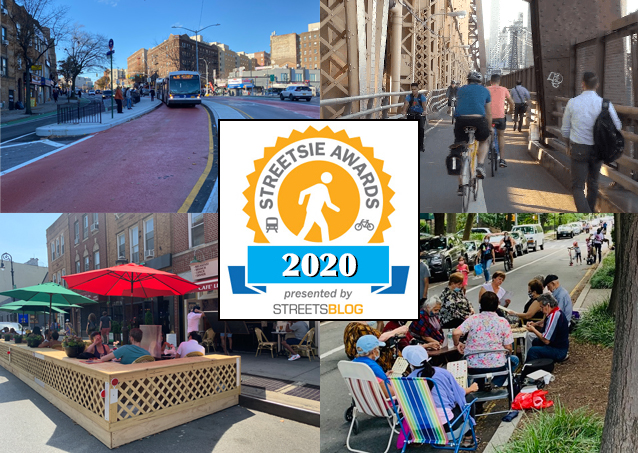
Let’s face it: 2020 was the suckiest year so far in what is turning out to be a super-sucky millenium for New York City.
Yes, the year in which an attack from the air on a pair of oversized office buildings killed 3,000 people in a day (2001), or the one in which the East Coast power grid blew out (2003), or in which we suffered a worldwide financial meltdown and depression (2008), or when a hurricane inundated large swaths of the city and its transit system (2012) — those all were bad years.
But a year in which we got a plague that so far has killed some 25,000 New Yorkers (and 300,000-plus total Americans) and sickened almost 400,000, a violent police crackdown on largely peaceful protests, the second-most road deaths in Mayor de Blasio's tenure, and a slow-motion coup d’etat out of Washington (or whatever we ultimately call the Orange Offensive) probably takes the cake. What disaster happens next? A world war that starts with a massive Russian cyber attack on the United States? (Oops….Can we leave that for next year?)
It was a terrible year transportation-wise (as our counterpoint Streetsie points out today). But what was the best transportation story of this no good, horrible, very bad year? The nominees are:
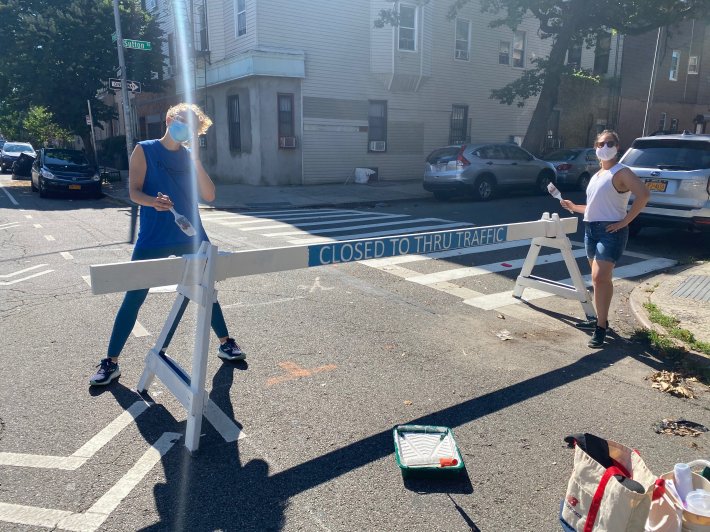
Open Streets
In 2020, New Yorkers, in the teeth of the pandemic, as sirens wailed and the hospitals and morgues brimmed, demanded that their streets serve the needs of people. They beat back the domain of the rapacious automobile and forced — yes, literally forced — the city to open many streets for social distancing. At first, the de Blasio administration balked at the demand, dedicating a precious small number of streets to the task and guarding them zealously with our over-armed internal-security force, the NYPD. The overdetermined and overburdened experiment promptly tanked, but a hue and cry from an enraged citizenry that would not stand to be cooped up in miniature apartments with a rampaging virus — even as the streets, briefly as it turned out, emptied of automobiles — goaded the city to move. The mayor relented and committed to 100 miles of open streets, the paradigmatic one being 34th Avenue in Jackson Heights, a pandemic epicenter. Neighborhoods fought all summer and fall with the motorists who smashed the wooden barriers demarcating the shared roadways. But the city has pledged to make some open streets permanent, and those who would succeed Bill de Blasio are falling all over themselves to pay fealty to the revolutionary notion. The struggle continues.
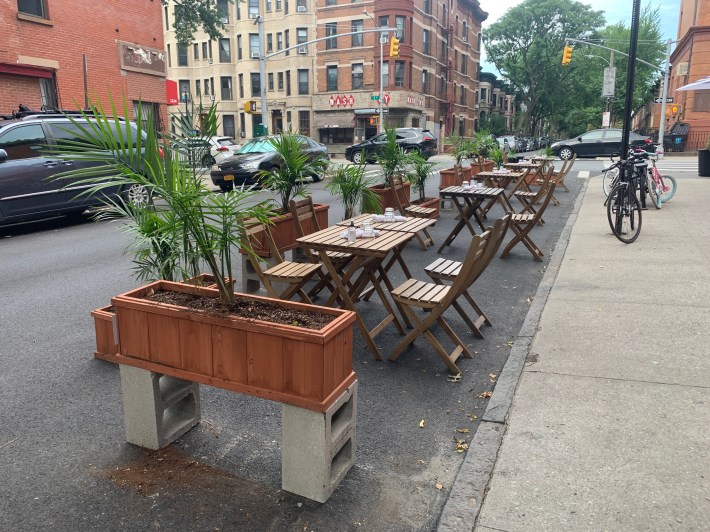
Open Restaurants
If open streets were labor's contribution to surviving the pandemic, open restaurants were capital's. And, as usual, it's amazing how fast things happen when money talks! As our restaurants and bars swooned during the initial shutdown, owners and their agents organized to press the city for permission for open-air curbside dining — the most important rollback of private car storage in the public right of way since the city allowed motorists to park on streets overnight in 1950. The sclerotic and hidebound city bureaucracy wisely got out of the way, and almost overnight thousands of eateries blossomed at the curb. Who knew that fusty old New York, whose bars long had patterned themselves after airless Irish pubs and dank German rathskellers, suddenly could embrace its inner Latin, in the form of curbside cafe society like that in Paris, Rome and Mexico City? Now that New Yorkers have supped and lifted glasses in the spaces in which ugly steel boxes once spoiled the view, we are not going back — not least because thousands of establishments that employ tens of thousands of workers spent millions of dollars in order to stay alive outdoors during the summer and fall. Chin chin!
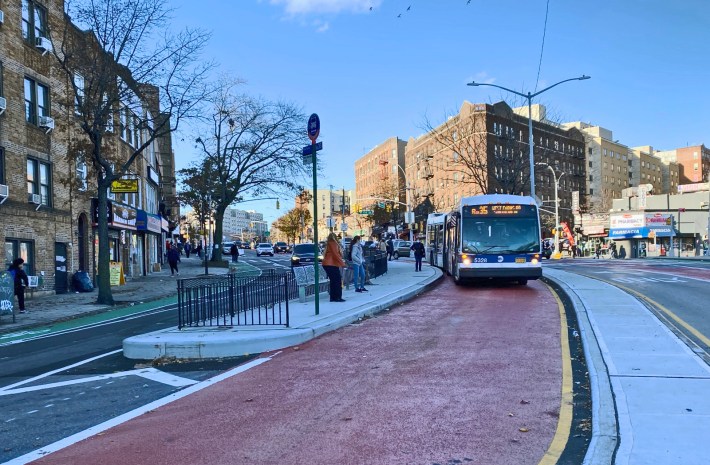
E.L. Grant Highway
Like every other agency in our COVID-socked city, the Department of Transportation had an exceptionally bad year, losing a number of staffers to the virus and then absorbing an 11-percent budget cut that delayed many important projects. With so much less to work with, some agency projects have languished. How wonderful, then to see the department's transformation of the Edward L. Grant Highway in the Highbridge section of The Bronx from a multi-lane speedway that lived up to its name into a calmer, narrower roadway that’s been fitted with a protected bike lane and a dedicated, center-running bus lane.
The changes are so major that they appear to be the result of a major capital project, involving millions of dollars and multiple subcontractors. But the work — which includes pedestrian refuge islands, bus-stop improvements along with the dedicated lane, the protected bike lane and signage — came in at far less because the work was done in-house. The project's success raised hopes that such transformations might proliferate. The Bronx — so long neglected by the city for bike infrastructure, and the site of so many dangerous roadways — cheers (and not in the usual way).
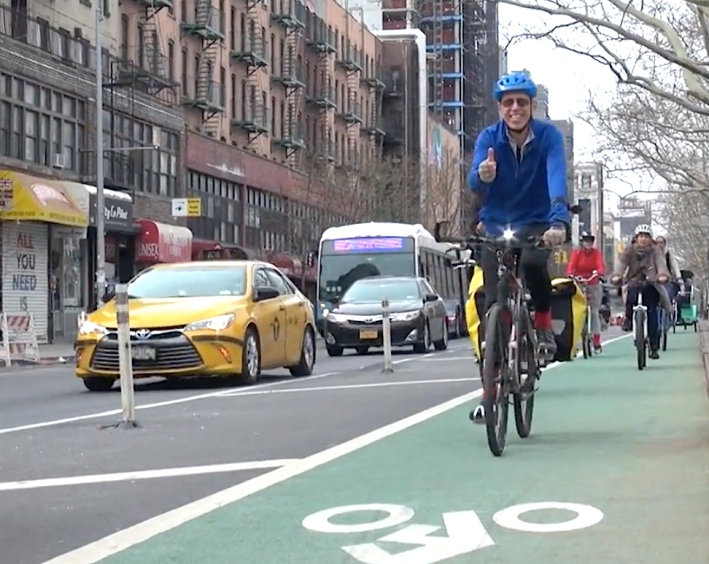
The Cycling Boom
In order to stay off of public transportation during the pandemic, which early on gained an undeserved reputation as a place of spread, New Yorkers took to two wheels with a heretofore unseen avidity. Cyclists jammed greenways, bridges, bike lanes — prompting pushes for further safety infrastructure as the preoccupied mayor dawdled. Essential workers, stranded by overnight subway shutdowns, got help in the form of bike fleets. The boom shows no signs of letting up, further cementing biking as a premier transportation mode in our city. Now let's get the world-class protected infrastructure we need in order to support it.
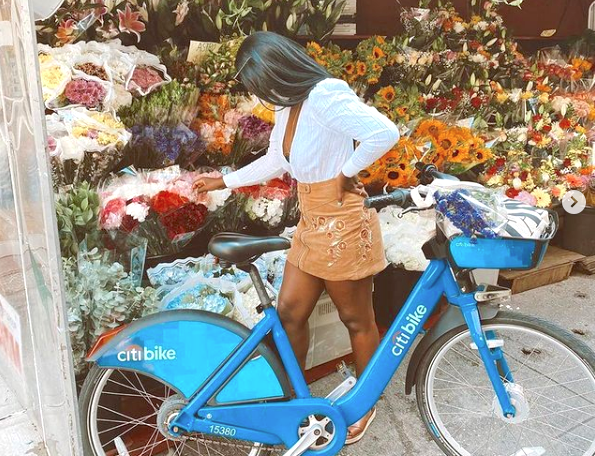
The Citi Bike Expansion
A collaboration of Lyft and the DOT, Citi Bike had announced big expansion plans in the summer before the pandemic. Even as COVID began to stall projects all over the city, Citi Bike persisted in its drive, entering 18 new neighborhoods, including 12 in the Bronx (Claremont, Concourse, Crotona Park, Highbridge, Hunts Point, Longwood, Melrose, Morrisania, Mott Haven, Mount Eden, Port Morris, and The Hub) and six in Manhattan: Hamilton Heights, Harlem, Randall's Island, Roosevelt Island, Sugar Hill, and Washington Heights.
Good-neighbor Citi Bike also partnered with the DOT and the NYC Economic Development Corporation on a program that donated 100 bikes to health-care workers at COVID-socked hospitals in neighborhoods outside of Citi Bike's service area, including Elmhurst in Queens and Saint Barnabas and Jacobi in the Bronx.
And the Streetsie goes to...open restaurants! It was a close vote, but we ultimately decided that the open streets initiative, while great, was scattershot and is unlikely to result in the permanent, linear, car-free parks that so many neighborhoods need.
But the open restaurant program, which Mayor de Blasio hopes will be permanent, has the potential to transform tens of thousands of unneeded "free" parking places into a benefit to New York's long-struggling restaurateurs, while also giving our streets far more life than the dour streetscape created by row after row of stored cars. Plus, if the city can make owning a car less convenient, perhaps more people will give up their four-wheeled albatrosses.
